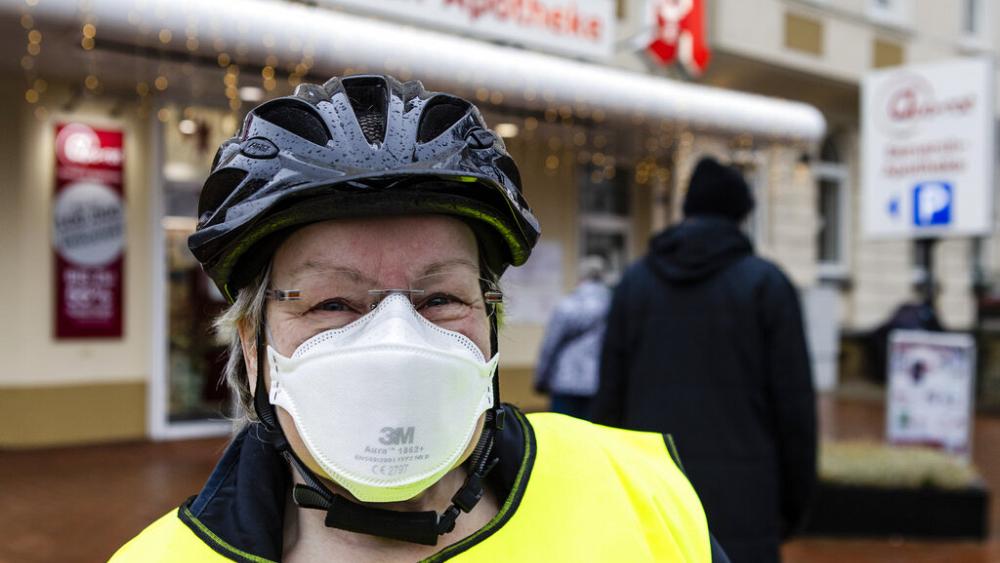
As new variants of the coronavirus spread across Europe, authorities are adjusting their advice on the types of face coverings people should wear.
Health officials in France have warned that handmade cloth masks may not be protective enough. The German state of Bavaria now requires hospital-grade FFP2 masks on public transport and in shops, and Austria will follow next Monday (January 25).
Euronews put a few questions on the topic to Dr Simon Kolstoe, a senior lecturer in evidence-based healthcare at the University of Portsmouth.
What do FFP2 masks do that others don’t?
Kolstoe says it’s important to bear in mind that there are two main types of masks on the market.
On the one hand, there are masks designed to stop you from exhaling on other people. Think fabric masks or blue and white surgical masks. If the wearer coughs or sneezes, most of the droplets expelled will get caught in the mask instead of landing on people nearby. But they don’t efficiently prevent the wearer from inhaling much smaller airborne particles of coronavirus.
On the other hand, some masks also serve as personal protective equipment: they are designed to protect the wearer from breathing in much smaller viral particles. These are FFP masks: filtering face pieces, also known as respirators.
In Europe, FFP2 masks filter at least 94 per cent of aerosols. They are similar to N95 masks, which filter at least 95 per cent of aerosols. These are the types of masks often seen in health care facilities and biology labs.
“Anyone who’s worked in those sorts of environments knows that it’s not just a case of slapping a mask on,” Kolstoe cautioned. “There’s training as well, wearing gloves, wearing the right equipment, washing your hands, an appropriate way of handling things.”
He added it would be “unreasonable” to expect the public to have that same training, and that the use of FFP2 masks in public settings will necessarily not be as effective as in professional settings.
If FFP masks are more protective, why haven’t we been told to wear them before?
At the start of the pandemic last year, authorities across the world were worried that health care workers would run out of personal protective equipment, and FFP2 masks in particular.
“The public were advised to make their own masks or wear alternatives just to stop the competition with people working in health care,” said Kolstoe.
Now that more factories are making such masks and they are much more widely available, authorities around the world have started encouraging the public to wear them in specific settings.
In crowded or confined spaces, Kolstoe says it makes sense to wear an FFP2 mask even if it’s not as effective as in a lab: “I think it will make at least a difference.”
What about FFP masks with valves?
Masks with valves should be avoided in crowded settings, Kolstoe.
Some face masks indeed feature valves designed to filter the air coming in, but not the air going out. Some valves even shoot the dirty air out, which could infect people standing nearby.
More generally, Kolstoe stresses the importance of staying away from crowds, close contact, and confined spaces during the pandemic.
Watch the interview in the video player above.
 RSS Feed
RSS Feed















 January 20th, 2021
January 20th, 2021  Awake Goy
Awake Goy  Posted in
Posted in  Tags:
Tags: 













